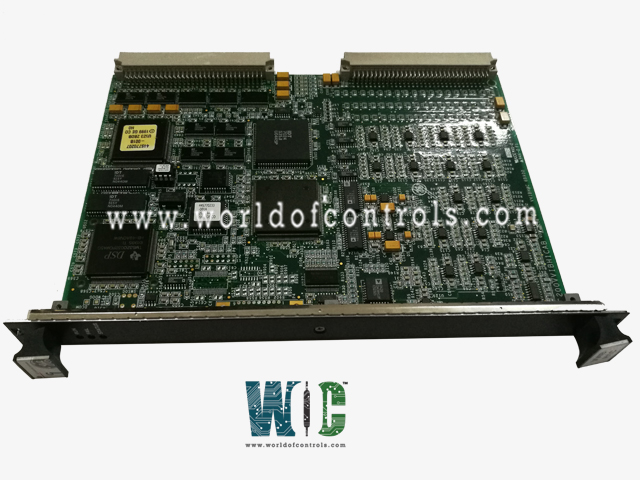
World Of Controls understands the criticality of your requirement and works towards reducing the lead time as much as possible.
IS200VVIBH1CAA - Vibration Monitoring I/O Module is available in stock which ships the same day.
IS200VVIBH1CAA - Vibration Monitoring I/O Module comes in UNUSED as well as REBUILT condition.
To avail our best deals for IS200VVIBH1CAA - Vibration Monitoring I/O Module, contact us and we will get back to you within 24 hours.
SPECIFICATIONS:
Part Number: IS200VVIBH1CAA
Manufacturer: General Electric
Series: Mark VI
Product Type: Vibration Monitoring I/O Module
Technology: Surface Mount
Common Mode Voltage Range: ±5 V
Dimensions: 11.00 x 9.00 x 3.00
Operating temperature: 0 to 60 °C
No.of Analog Voltage Inputs: 6
Repair: 3-7 Day
Availability: In Stock
Country of Origin: United States
FUNCTIONAL DESCRIPTION:
IS200VVIBH1CAA is a Vibration Monitoring I/O Module manufactured and designed by General Electric as part of the Mark VI Series used in GE Speedtronic Gas Turbine Control Systems. The Mark VI system uses Bently Nevada probes for shaft vibration monitoring. The Vibration Monitor Board VVIB processes the vibration probe signals that come from the TVIB terminal board. Up to 14 probes connect directly to the terminal board, and two TVIBs can be cabled to the VVIB processor board. VVIB digitizes the various vibration signals and sends them over the VME bus to the controller. The available vibration probes compatible with TVIB include the following:
Vibration probe inputs are normally used for four protective functions in turbine applications as follows:
WOC has the largest stock of OEM Replacement Parts for GE Speedtronic Gas Turbine Control Systems. We can also repair your faulty boards and supply unused and rebuilt boards backed up with a warranty. Our team of experts is available round the clock to support your OEM needs. Our team of experts at WOC is happy to assist you with any of your automation requirements. For pricing and availability on parts and repairs, kindly contact our team by phone or email.
What is the purpose of the Vibration Monitoring I/O Module?
The Vibration Monitoring I/O Module is designed to process and monitor vibration signals from various sensors in industrial systems, such as turbines. It provides real-time data that is crucial for detecting abnormal vibrations and ensuring the safe and efficient operation of machinery.
What types of vibration probes are compatible with this module?
This module is compatible with a variety of vibration probes, including proximity probes, velocity probes, acceleration probes, seismic probes, and phase probes. Each type of probe is used to measure different aspects of vibration and provide comprehensive monitoring.
How many analog voltage inputs does the module have?
The module is equipped with six analog voltage inputs, allowing it to receive signals from multiple vibration sensors simultaneously.